Do’s and dont’s for teaching reading fluency
Have you been following along with our series about the Big 5? So far we’ve tackled phonemic awareness and phonics. Now it’s time to discuss the do’s and dont’s for teaching reading fluency.
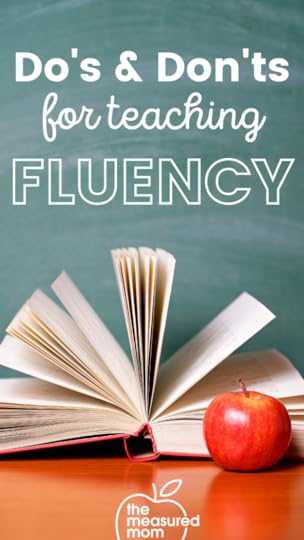
As I look back on my years as a balanced literacy teacher, I realize that I misunderstood fluency and its place in the big picture.
I was opposed to decodable books because I thought that leveled books, with their predictable language, helped students become fluent readers.
Since my students could “read” those predictable sentences quickly and easily, I thought this was building their fluency.
In contrast, I was troubled when I heard students slooowwlly sound out words in decodable books. I felt that it negatively impacted fluency and comprehension. I felt the same concern that Margaret Goldberg wrote about in her blog post, The Drudgery (and Beauty) of Decodable texts.
“Sounding out each word took so long that by the time they got to the end of a sentence, students didn’t know what they had read. I worried that I was creating ‘word callers’ (and they weren’t even calling the words very well!)”
As Goldberg studied the science of reading, she learned the same thing that I did: students have to do the hard work of sounding out words to become proficient readers.
Fluency will not happen right away.
While they can learn comprehension through whole class read alouds, comprehension of the texts they read themselves will not happen right away.
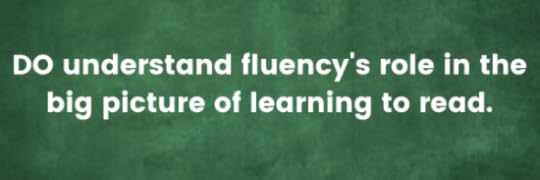
I can best explain the proper place of fluency through a video excerpt from the Fluency Module of my online course, Teaching Every Reader.
Key takeaways from the video:
Fluency is the automatic application of decoding and language skills.Fluency is the bridge to comprehension.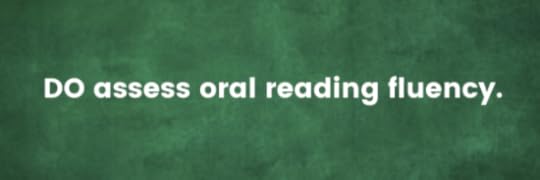
It’s easy to go overboard with fluency assessments, or to feel so overwhelmed that you’re not sure where to start.
Good news! Assessing oral reading fluency can be quick and simple.
What gets confusing is all the acronyms and abbreviations. Let’s get those straight first.
ORF: Oral reading fluency; it’s a combination of reading rate and accuracy.CBM: Curriculum based measurement; it’s the assessment tool that is most commonly used for measuring ORF.WCPM: Words correct per minute; it’s how we measure ORF.To conduct an ORF CBM assessment, listen to a student read aloud from an unpracticed, grade level passage for one minute. Follow along with a copy of the passage and mark any errors.
At the end of the one minute, determine the student’s ORF score by subtracting the number of errors from the total number of words word. The score is expressed as WCPM.
How often should you assess students’ oral reading fluency? Here’s a good plan:
Assess first graders’ fluency in the winter and spring.For second grade and up, assess oral reading fluency in the fall, winter and spring.After assessing, be sure to compare student scores to the fluency norms as compiled by Jan Hasbrouck and Gerald Tindal.
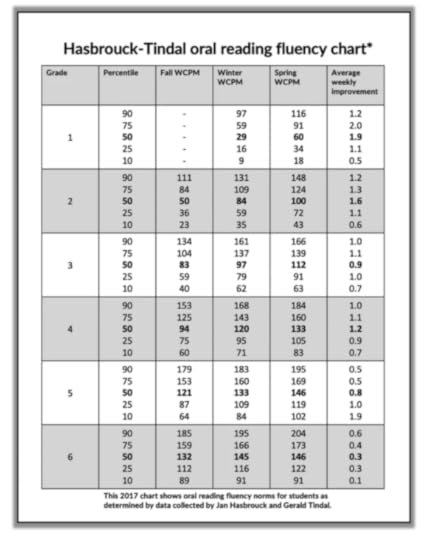
If a child’s fluency is not within ten WCPM of the 50th percentile on the table, you should assess more often and keep track of the child’s progress on a chart.

With all that talk about assessing oral reading fluency, it’s important to remember that we do this to assess only one aspect of fluency.
As Jan Hasbrouck and Deborah Glaser write in their handbook, Reading Fluency, “ORF assessments yield results that can be interpreted and used for making decisions, yet provide only ‘one piece of the puzzle’ when determining overall wellness.”
In fact, there are four key aspects of teaching reading fluency, which I’ve described in the following infographic:
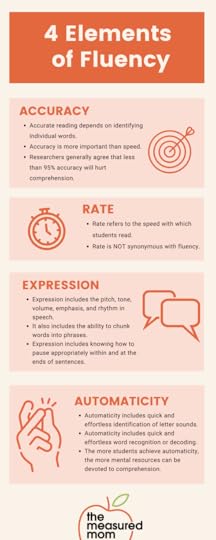
Did you catch the bullets under AUTOMATICITY? Fluency isn’t just about reading words. We need students to be able to quickly identify letters, letter sounds, syllables, and more.
If you’re a student of my course, Teaching Every Reader, you can get a file of fluency drills for all levels in this lesson.
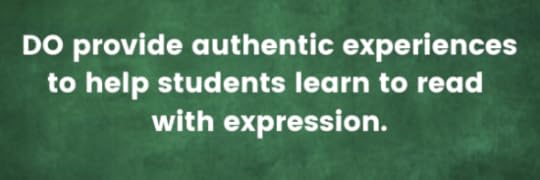
Prosody is all about to do with reading the way we speak – it’s about reading with phrasing, emotion, and emphasis, and rhythm (even inside our heads).
Teaching students to read with prosody is SUCH an important part of teaching reading fluency.
According to the authors Pamela E. Hook and Sandra D. Jones, in their chapter of the book Expert Perpsectives on Interventions in Reading, children must learn to read with expression in order to improve comprehension.
These experts tell us that students must transition from decoding text to constructing meaning by reading with prosody. “Making this connection allows a reader to self-monitor and self-correct, which in turn facilitates the comprehension of text.”
I can speak to this from my own experience. Of our six kids, one stands out as not being particularly interested in reading. (He’d rather shoot baskets, throw a football, or ride his bike any day!) He often reads aloud in a monotone voice, hardly stopping for punctuation.
When I ask him about what he just read, it’s no surprise that he has no idea! In contrast, when he and I read aloud together and I force him to stop and read with expression, his comprehension improves.
Use reader’s theater to build reading fluencyReader’s theater is an authentic way to get students to reread a text with expression – which builds fluency and improves comprehension.
Reader’s theater combines reading and performing. It requires no costumes or scenery.
You need a copy of the script for each group of students. As the teacher, you’ll assign roles and guide students as they practice reading their scripts. After several days of practice, students can perform their scripts for the class.
I especially love reader’s theater scripts in the form of partner plays!
Partner plays include only two parts, making them ideal for buddy reading and use at centers.
Here’s an audio recording of a partner play I read with my youngest (he just started kindergarten; I taught him to read at home before starting school using a structured literacy approach).
When you get to the end of this blog post, you’re invited to download all three levels of this partner play for FREE!

Fluency is important, but it’s often forgotten in the daily challenge of “fitting it all in.”
As tough as it sounds, I recommend incorporating fluency practice every day in grades 1-3.
If this sounds tedious, don’t worry. There are countless ways to build fluency!
Do whole class or small group echo reading, in which you model how to read a text, and students “echo” you, matching your phrasing as much as possible as they reread the text. This is not a recitation activity; it is reading. Make sure that you gradually increase the amount of text that students echo to prevent them from relying on their memory.Do whole group or small group choral reading. You and your students will read the text simultaneously; it will give them practice developing automaticity and expression.
For students who need a fluency intervention, use timed repeated reading. This is when a student reads for one minute and tries to beat their rate and accuracy with successive one-minute readings of the same text. But don’t use this with everyone. According to the authors of the Core Reading Sourcebook, timed repeated reading is best used “as an intervention strategy that is most appropriate for slow but accurate readers who need intense practice to increase their automaticity in reading connected text.”
Provide fluency drills at centers to give students practice naming letters and letter sounds. More advanced readers should practice reading syllables and single words. If you’re a member of my online course, Teaching Every Reader, you can head to this lesson to grab a big file of fluency drills.
Have students play word reading games in pairs or small groups. (My collection of editable reading games is perfect for this.)
Spend a week doing partner plays or reader’s theater (zip to the end of this post to download a free script in three levels!).
Give students daily time to read text at their independent or instructional level. Phonics lessons are great, but students must practice what they’re learning by reading connected text. I recommend making sure that each student has a bag of decodable texts that s/he can read every day. For students who are ready for leveled books, those should be in the bag as well. Note that I did not say that kids should grab any old book off the shelf and read for fluency practice. Work with your students to choose their books, and hold them accountable. Listen to them read whenever possible.Let’s sum up!DO understand the role of fluency in the big picture of learning to read. Fluency is the bridge to comprehension.DO assess oral reading fluency at different points of the year for first grade and up.DON’T focus only on reading rate. Fluency includes accuracy, rate, expression, and automaticity.DO provide authentic experiences for students to practice reading with expression. Partner plays are my favorite tool for this! Scroll down to get a FREE script.DON’T forget to make time for daily fluency building.
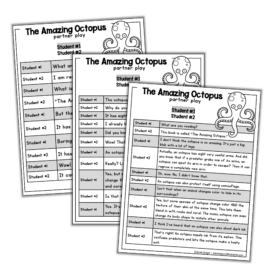
Free partner play in 3 levels
CLICK TO DOWNLOAD
The post Do’s and dont’s for teaching reading fluency appeared first on The Measured Mom.
Anna Geiger's Blog
- Anna Geiger's profile
- 1 follower



